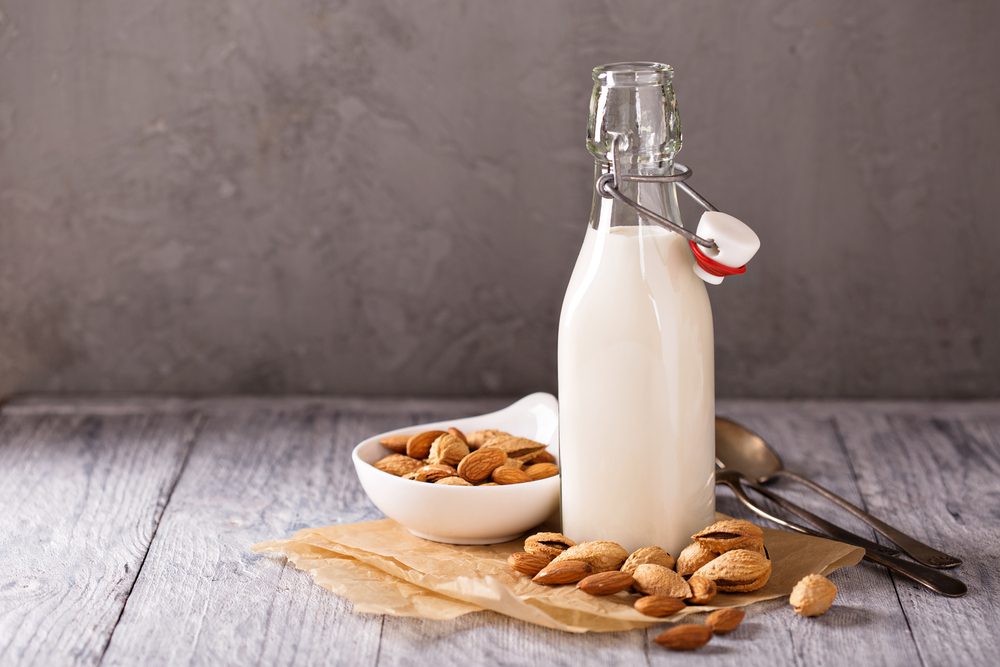Today’s food industry is nothing like it was a few decades ago.
On the bright side, I can enjoy bananas straight from Ecuador whenever I feel like it.
On the other side, almost every food we find is genetically modified or contains artificial ingredients of some sort.
Come and think about it; it’s truly amazing! The human race has found a way to make food last for years – something our ancestors barely even dreamed about.
I mean, a woman kept a McDonald’s burger for 21 years, and it was intact!
But there’s a trick here too: how can we know if a food has gone bad when most of them look just as good as new? How can we avoid food poisoning when we can’t tell whether an ingredient is indeed fresh or not?
‘Expiration dates,’ you might say – and I agree. That helps a lot. However, there are many situations when some foods can go bad before they expire, and we must know how to spot them instantly.
Today, we’ll reveal 21 expert-verified telltale signs that the most common foods we eat have gone bad. Let’s check them out!
Eggs floating in the water
You might’ve heard about this hack before, as I know several grandparents who know how to do it.
How it works: Place an egg inside a glass of water. If it drops to the bottom of the glass, it’s fresh and you can eat it safely; if it starts floating, it’s gone bad.
That’s the basic rule. However, the US Department of Agriculture points out that even this rule is debatable. For example, if your egg is barely floating, it doesn’t necessarily mean it’s gone bad.
In such cases, your best bet is to cook the egg and then smell its yolk. A rotten yolk will smell horribly regardless of how you cook it!
Your veggies have a yellow hue
Broccoli and zucchini are green; bell peppers are orange; and tomatoes are red.
But what if they have a slightly different color?
Most vegetables (green ones in particular) will change their hue within a few days of being unpackaged. This is the normal process they go through – and a good indicator that if your veggies look fresh for days or weeks, they’re probably overloaded with chemicals that preserve their appearance.
However, if your green veggies start turning yellow, it might be time to throw them away.
If your broccoli only has a few tiny yellow ends, though, you can still save it. Cut off the yellow parts and soak the stems of the vegetables for up to 15 minutes. Voila!
Green-skin potatoes
There’s a reason why potatoes are so popular around the world: they’re versatile, affordable, and they can last for a much longer time than other vegetables.
However, even these wonder vegetables can go bad at some point.
For example, have you noticed that sometimes the skin of a potato has a greenish hue to it?
Sometimes, this can be a sign that the potato has started producing solanine. This is a very dangerous substance that can lead to severe food poisoning or, in extreme cases, paralysis.
Of course, some potatoes may look greenish but be perfectly fine; however, most people choose not to risk anything and just get new ones.

Rice kept in the fridge
Since it’s a cereal, rice can last for what seems like forever. One of its amazing properties is that it can last very well even after it’s cooked – but be careful!
Experts recommend eating cooked rice for up to six days, but only if you keep it in the fridge.
Otherwise, you may be risking food poisoning, which is just not worth it. Why? After several days, cooked rice can start developing a bacteria called Bacillus cereus; unlike other bacteria, this one doesn’t die even if you reheat the rice, so it’s best to stay away from it.
If you cook rice with milk or other dairy products, its shelf life becomes even shorter since dairy is much more prone to developing harmful bacteria.
Your meat has a weird color
I don’t care if you just got your meat from the grocery store, if you’ve had it in your freezer for a while, or if it’s from a friend: if it has a weird color, don’t eat it.
However, I know it’s easier said than done since meat can come in such a wide range of colors. The US Department of Agriculture says that meat should be red, but many types of steak can be brownish and still great.
If you notice brownish meat wrapped in plastic, it might just be due to its lack of oxygen. However, any meat that looks strangely dark or has a greenish hue should be tossed immediately.
Eating old or rotten meat is one of the most dangerous things you could do since it can develop bacteria that causes severe food poisoning or extreme allergic reactions.
Fruit has become mushy
Unfortunately, fruits can go bad very quickly, which means we have to purchase small batches constantly.
If you’ve ever forgotten about some fruits around the house, you’ve probably found them covered in mold. In this case, you should throw them away even if they have just a tiny bit of mold since they can still cause food poisoning or allergic reactions.
However, another sign few people know about is if a fruit is very mushy. No matter how savory it may still seem, this is a clear sign that it’s taken a turn, and you should toss it to avoid any digestive problems.
Food has mold on it
The thought of eating food with mold seems strange to many people (unless we talk about fancy cheese).
However, my grandparents always took the mold out of jam jars and just ate the rest. You can do the same with some vegetables by cutting the moldy part off and cooking the rest of the food.
Unfortunately, though, it doesn’t work that way.
Mold basically means microorganisms that spread and continue to invade a food until it’s ‘eaten’ completely. The US Department of Agriculture points out that ‘when a food shows heavy mold growth, root threads have invaded it deeply.’ This means it has to go.
However, some molds are actually beneficial for your health and highly recommended! If you want to know which they are, check out this amazing book!
Carrots become slimy
Much like potatoes, carrots have a longer shelf life, especially if you refrigerate them. However, they can also cause plenty of problems if you eat them after they’ve gone bad.
What does that mean?
According to experts, carrots will usually become soft and soggy after up to 5 days in your pantry. Many chefs agree that you can still cut off the bad parts and use the rest of the vegetable, although it’s not really recommended if you can get a fresh batch.
Bonus tip: if you’re planning to freeze carrots, do not freeze them raw! Steaming them can preserve their nutritional flavor much better.
Spices get faded
I’m sorry to break it to you, but apparently spices don’t last forever. This means it’s time to throw away any spice that’s been in your home for ages.
But spices don’t grow mold, and they won’t become mushy like fruit does either. So how can you tell whether they’ve gone bad or not?
There are two signs:
They’ve started fading in color;
Their smell isn’t as strong as it used to be.
Thankfully, we can find spices at any grocery store, and most of them are affordable too. Adding weird spices to your delicious dishes just isn’t worth the risk.
Mushrooms look darker
If you ever want to pick the best, freshest mushrooms from the grocery store, make sure to pick the lightest ones.
In other terms, the darker a mushroom gets, the older it is. Of course, this depends on the variety, since there are some types of brown mushrooms as well – but even so, choose the lightest shade of brown for your meals.
Even though darker mushrooms haven’t gone bad yet, they still won’t taste as good as their lighter alternatives.
Furthermore, if a mushroom starts feeling slimy on the surface, it also means it’s time to throw it away since this is one of the first signs of mold.

Your almond milk is thicker
We’ve already talked about dairy products and how they can go bad much quicker than other types of food – and cow’s milk makes no exception.
But what about plant-based milk?
When it comes to almond milk, for example, experts say it can last slightly longer than cow’s milk.
As a rule of thumb, if your non-dairy milk seems thicker, chunky or starts developing a film, it’s probably time to throw it away. This advice is valid regardless of the expiration date mentioned on the label, since that one is only valid for unopened products.
Chicken turned gray
If red meat turns brown when it goes bad, with chicken things are a little different.
Experts from the Tasting Table have concluded that the normal color for any part of a chicken is light pink. If it has even the slightest grayish hue, it’s best to toss it immediately.
This change in color comes from a specific type of bacteria that starts growing on chicken after a while.
Also, note that just because you keep your chicken in the freezer doesn’t mean it’s good to be eaten forever.
Avoiding the bad
Knowing which foods and cooking methods are the healthiest is the first step towards eating a healthier life. However, it’s equally important to figure out how to store your favorite ingredients properly – and throw them away when they’ve gone bad.
You should also check out: Top 11 Most Dangerous Foods and Drinks for Diabetics













